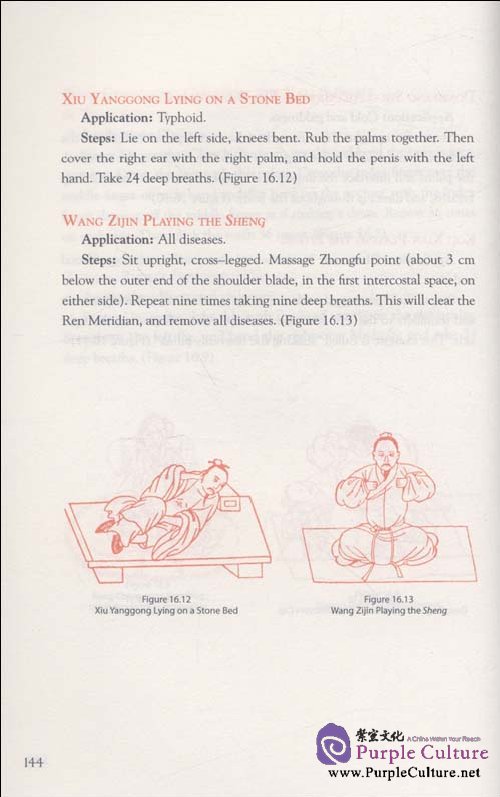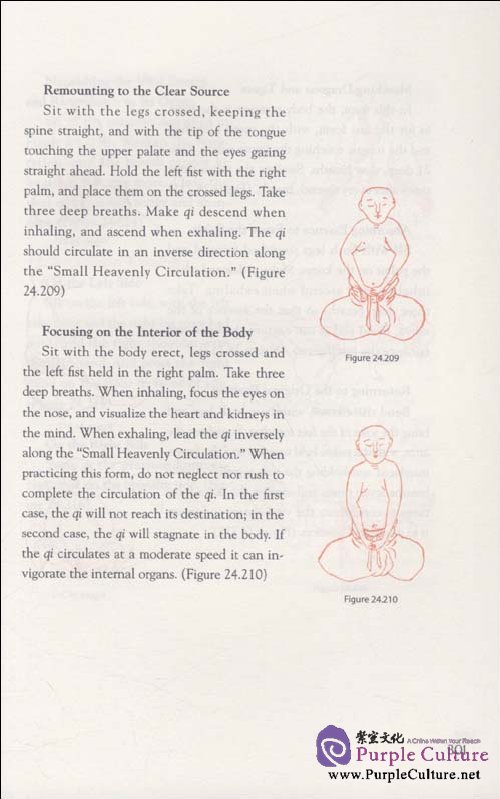Sample Pages Preview


Standing Form 6 of Xuegong Following the previous form, move the palms downward slowly andgradually clench the fists. Lower the fists to chin height. (Figure 22.35)
Standing Form 7 of Xuegong
Following the previous form, open the fists, and straighten the palmshorizontally outward, thumbs erect and side by side. (Figure 22.36)
Standing Form 8 of Xuegong
Following the previous form, raise the palms together above the forehead.Part the thumbs, and join the little fingers. Clench the fists gradually whilemoving them down to chin height. Unclench the fists, and flatten the palms,with the little fingers and wrists side by side. Raise the palms together above theforehead. (Figure 22.37)
Standing Form 9 of Xuegong
Following the previous form, clench the fists gradually while movingthem down to chin height. Unclench the fists, and flatten the palms, withthe little fingers and wrists side by side. Raise the palms together abovethe forehead. (Figure 22.38)
Standing Form 10 of Xuegong
Following the previous form, clench the fists gradually while movingthem down. Part the fists, and pose them before the flanks, and then forma circle with the arms, fists facing each other about 60 cm apart and thebacks of the hands facing up. Gulp a breath. (Figure 22.39)
Do the Standing Forms of Xuegong three times, gulping three breathsin all.

